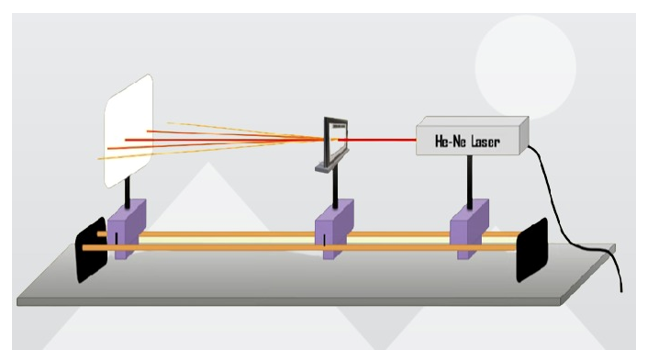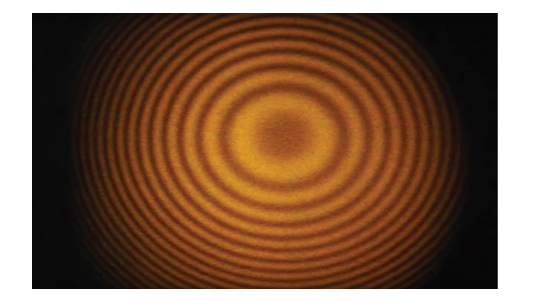To determine the wavelength of He-Ne laser light using single slit diffraction.
Light transverse wave. When two waves of same wavelength and amplitude travel through same medium, their amplitudes combine. A wave of greater or lesser amplitude than the original will be the result. The addition of amplitudes due to superposition of the waves is called interference. if the crest of one wave meets with the trough of the other, the resultant intensity will be zero and the waves are said to interfere destructively. Alternatively, if the crest of one wave meets with the crest of the other the resultant will be maximum intensity and the way are said to interfere constructively,
Suppose two coherent (i.e. their initial phase relationship remains constant) waves start from the same point and travel different paths before coming back together and interfering with each other, Suppose also that the re-combined waves illuminate a screen where the position on the screen depends on the difference in the lengths of the paths traveled by the two waves. Then the resulting alternating bright and dark bands on the screen are called interference fringes,
In constructive interference, bright fringe (band) is obtained on the screen. For constructive interference to occur, the path difference between two beams must be an integral multiple mλ of the wavelength λ A where m is the order, with m= 0,1,2…..
If the path difference between two waves is (m + 1/2) λ , the interference between them is destructive, and a dark fringe appear on the screen.
Michelson’s Interferometer:
The Michelson interferometer (invented by the American physicist Albert A. Michelson, 1852–1931) is a precision instrument that produces interference fringes by splitting a light beam into two parts and then recombining them after they have traveled different optical paths. depicts the interferometer and the path of a light beam from a single point on the extended source S, which is a ground-glass plate that diffuses the light from a monochromatic lamp of wavelength λ0λ0. The beam strikes the half-silvered mirror M, where half of it is reflected to the side and half passes through the mirror. The reflected light travels to the movable plane mirror M1M1, where it is reflected back through M to the observer. The transmitted half of the original beam is reflected back by the stationary mirror M2M2 and then toward the observer by M.

Because both beams originate from the same point on the source, they are coherent and therefore interfere. Notice from the figure that one beam passes through M three times and the other only once. To ensure that both beams traverse the same thickness of glass, a compensator plate C of transparent glass is placed in the arm containing M2. This plate is a duplicate of M (without the silvering) and is usually cut from the same piece of glass used to produce M. With the compensator in place, any phase difference between the two beams is due solely to the difference in the distances they travel.
The path difference of the two beams when they recombine is 2d1−2d2, where d1 is the distance between M and M1, and d2 is the distance between M and M2. Suppose this path difference is an integer number of wavelengths mλ0. Then, constructive interference occurs and a bright image of the point on the source is seen at the observer. Now the light from any other point on the source whose two beams have this same path difference also undergoes constructive interference and produces a bright image. The collection of these point images is a bright fringe corresponding to a path difference of mλ0 .When M1 is moved a distance Δd=λ0/2, this path difference changes by λ0, and each fringe moves to the position previously occupied by an adjacent fringe. Consequently, by counting the number of fringes m passing a given point as M1 is moved, an observer can measure minute displacements that are accurate to a fraction of a wavelength, as shown by the relation
Δd=m λ0/2

Measurement of wavelength:
Using the Michelson interferometer, the wavelength of light from a monochromatic source can be determined. If M1 is moved forward or backward, circular fringes appear or disappear at the center. The mirror is moved through a known distance d and the number N of fringes appearing or disappearing at the center is counted. For one fringe to appear or disappear, the mirror must be moved through a distance of λ/2. Knowing this, we can write,
d=nλ/2
so that the wavelength is,
